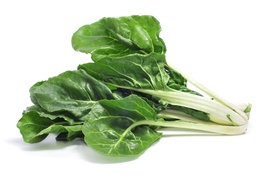
MANGOLD
Some of the best-looking green leaves, with the stalk in yellow, orange, pink, purple – or green. The leaves look like spinach and can often be cooked in the same way, but mangolds are actually related to beetroot.
The crispy shoots work well raw in salads. Otherwise they can be enjoyed cooked or sautéed.
Keep in mind
Mangold is also known as Swiss chard, silverbeet, perpetual spinach, spinach beet, crab beet, bright lights, seakale beet, or simply (in South Africa) spinach.
Eat mangold immediately, they’re very sensitive to heat and drying out.
Store the leaves in plastic in the coldest part of the fridge. If mangolds wilt, an ice-cold water bath will cheer them up.
How to cook mangold
Small, attractive leaves shouldn’t be cooked at all, just put them, in all their beautiful colors, in a salad. Larger leaves can be divided up into colorful stalks and green leaves, giving the sliced stalk a slightly longer cooking time.
Handling the crispy stalks:
- Fry them as they are or with garlic, chili, ginger or herbs.
- Grill them full length and eat as a colorful side dish.
- Pickle in a 1-2-3 solution and make them an even crisper addition to the plate.
Handling the leaves:
Sauté with garlic and eat as a side dish or fold into freshly cooked pasta and grate parmesan or pecorino over the top. A spoonful of cream also goes well here.
Fry mangold with chili and garlic and stir into couscous.
Add bits of the leaves to a vegetable or lentil soup towards the end of the cooking time with root vegetables and onion.
Make a frittata: Fry the onion and mangold until the liquid has been absorbed, add sliced boiled potatoes to the pan and pour over a mixture of egg, milk and parmesan and leave to set before placing the whole pan in the oven at 160°C for about 30 minutes.








